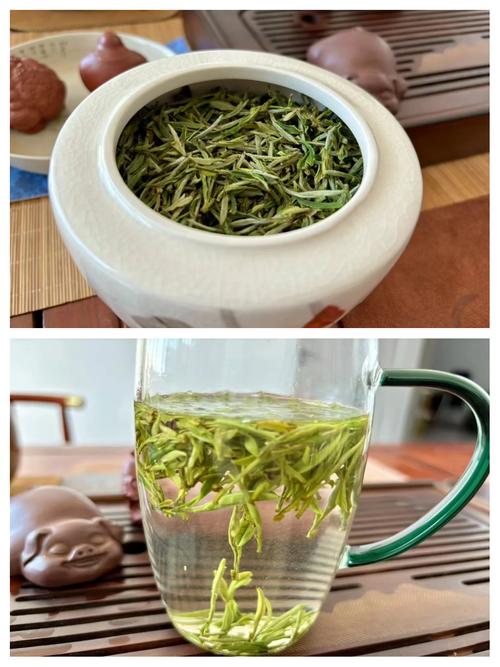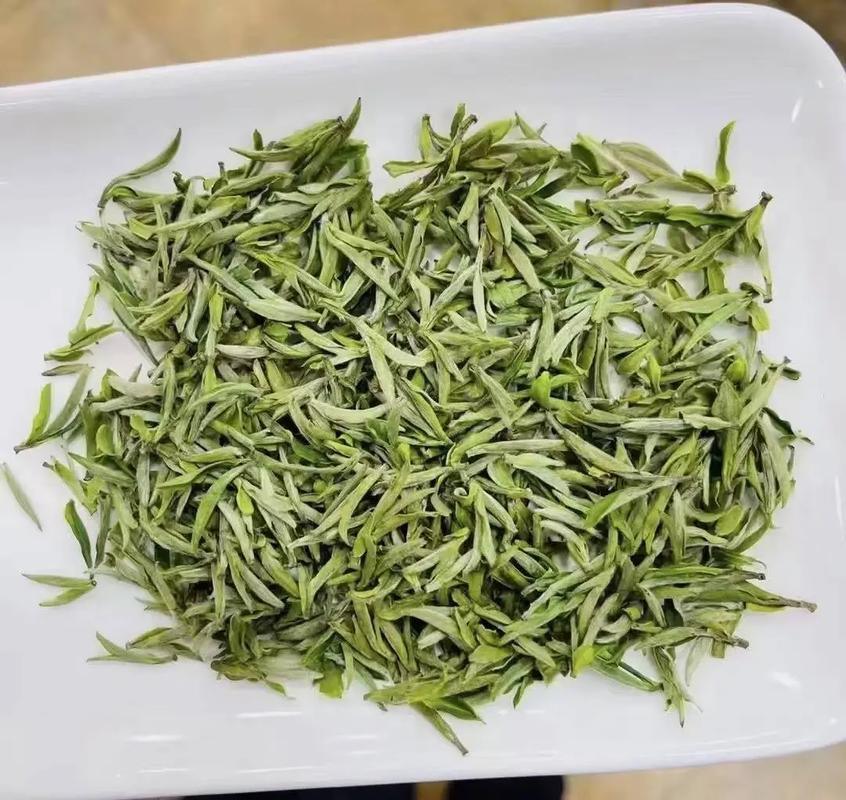1. Characteristics: A Whisper of Spring

Shucheng Xiaolanhua, or “Little Orchid of Shucheng,” is a green tea celebrated for its understated charm. Its name evokes the tea’s appearance: slender, emerald-green leaves curled like the petals of a blossoming orchid, dotted with delicate white down. The liquor, a translucent pale gold, exudes a fresh grassy aroma with hints of chestnut and wildflowers, while the taste profile balances brightness and depth—a crisp vegetal sweetness that lingers like the memory of mountain springs. Unlike many green teas, Xiaolanhua retains a subtle astringency, a nod to its high-altitude origins.
2. History: From Scholarly Retreats to Modern Revival
Though lesser-known globally, Xiaolanhua’s legacy stretches back to the Ming Dynasty, when it was favored by literati for its “unworldly” flavor. Legend claims that scholars retreat to Shucheng’s mountains to sip this tea while composing poetry, dubbing it the “drink of the隐士 (hermits).” Its modern revival began in the 1990s, when it was recognized as a “provincial heritage tea” of Anhui, celebrating its unique craftsmanship. Today, it remains a cherished symbol of Shucheng’s cultural identity, prized for its artisanal production.
3. Origin: The Cloud-Veiled Valleys of Anhui
Xiaolanhua’s birthplace lies in the Dabie Mountain Range of Anhui Province, specifically:
- Wanshou Township: The spiritual heartland, where tea gardens cling to slopes at 300–600 meters, shrouded in mist 200+ days annually.
- Heshui Village: Famed for its “cloud-tea” microclimate, with bushes rooted in red clay soils rich in iron oxides.
- Tangfang County: A newer production hub blending tradition with sustainable farming.
The valley’s ecosystem—dense bamboo forests, mineral-rich streams, and dramatic diurnal temperature shifts—imparts a unique “mountain freshness” to the tea.
4. Production Process: The Alchemy of Tradition
a. Plucking (清明前后):
Harvested during Qingming Festival (early April), when leaves reach optimal tenderness. Only the bud and one adjacent leaf are chosen, ensuring minimal bitterness.
b. Withering (晾青):
Leaves are spread on bamboo trays for 4–6 hours, reducing moisture to 70% and softening cell walls.
c. Fixation (杀青):
Leaves are tossed in woks at 120°C for 2–3 minutes, halting oxidation. Artisans use wooden rakes to prevent scorching, a technique requiring decades to master.
d. Shaping (理条):
Leaves are hand-rolled into slender curves, a process taking 4–6 hours to preserve their delicate shape.
e. Drying (烘焙):
A two-tiered wood-fired oven system slowly reduces moisture to 3–4%, locking in aroma and creating a glossy finish.
5. Brewing Method: The Ritual of Purity
- Water Quality: Use soft water (TDS < 100ppm) to avoid masking delicate flavors.
- Temperature: 80°C (176°F) to coax out complexity without bitterness.
- Tea-to-Water Ratio: 3g tea per 150ml water (adjust for preference).
- Infusion Time:
- 1st infusion: 1 minute (unveils grassy and chestnut notes).
- 2nd–3rd infusions: 1.5–2 minutes (develops floral sweetness).
- Vessel: Glass or porcelain gaiwans best showcase the leaves’ unfurling dance.
6. Authentication: Decoding Genuine Xiaolanhua
- Visual Cues: Genuine Xiaolanhua has an “orchid petal” shape with a glossy, dark jade hue. Counterfeits are often irregular or overly curled.
- Aroma: Authentic leaves emit a fresh, grassy fragrance; artificial scents in low-grade teas smell cloying.
- Liquor: Premium grades yield a clear, pale gold brew; inferior teas produce a murky, yellow-tinged liquid.
- Taste: Genuine Xiaolanhua has a lingering sweetness (“hui gan”) that coats the throat; fakes leave a flat, astringent finish.
7. Grading Standards & Pricing
Xiaolanhua is graded by leaf size, color, and aroma:
- Supreme Grade (特级): Uniform orchid petal shapes with minimal breaks. Price: 40–80/50g.
- Grade I (一级): Consistent leaves with visible down. Price: 25–60/50g.
- Grade II–III (二级–三级): Smaller leaves with visible stems. Price: 15–35/50g.
Price Drivers:
- Altitude: Tea from 500m+ gardens commands a premium.
- Harvest Time: Pre-Qingming (明前茶) teas fetch 2x post-Qingming prices.
- Certification: Organic or GI (Geographical Indication) tags increase value.
8. Health Benefits: A Brew for Balance
- Antioxidant Powerhouse: Rich in EGCG, linked to reduced inflammation and cancer prevention.
- Metabolic Boost: Caffeine and L-theanine synergize to enhance focus without jitters.
- Digestive Aid: Traditionally used to alleviate bloating and improve fat metabolism.
- Oral Health: Polyphenols inhibit bacteria linked to cavities and gum disease.
Epilogue: The Tea That Speaks of Place
Shucheng Xiaolanhua is not merely consumed—it is experienced. From the hands of Anhui artisans to the teacups of global connoisseurs, it embodies the philosophy of “harmony between human and nature.” In a world obsessed with homogeneity, Xiaolanhua’s delicate balance of freshness and depth reminds us that true luxury lies in embracing subtlety. As climate change and market pressures test its future, the legacy of this “little orchid” endures—a testament to the resilience of craft and the timeless allure of a cup steeped in mountain magic.



